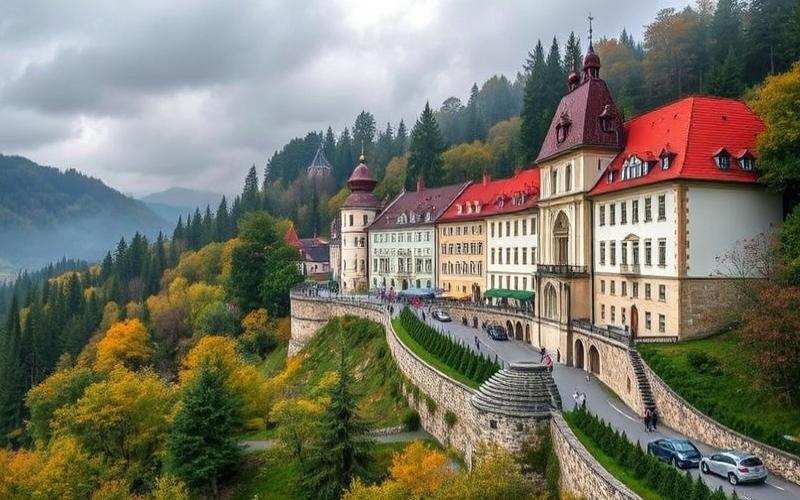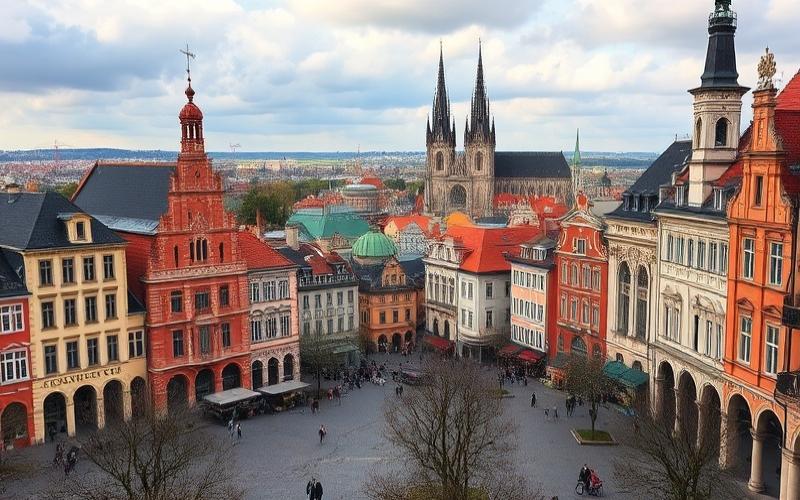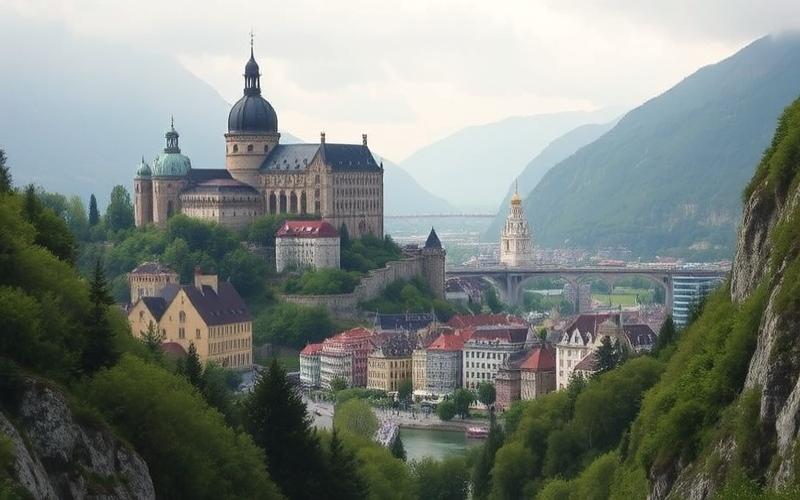
 Published on and written by Cyril Jarnias
Published on and written by Cyril Jarnias
In the current context of the Polish real estate market, one of the well-hidden tricks involves the excessive use of retouched photos to promote properties. These images, seemingly attractive at first glance, can often give a misleading impression of the actual condition of properties for sale or rent.
While technology makes sophisticated editing tools accessible, potential buyers and tenants risk discovering disappointing realities during physical visits, far from the promises enhanced by these snapshots.
Good to know:
This increasingly common phenomenon raises questions about methods to protect consumers and ensure transparency and authenticity in real estate transactions.
Understanding Real Estate Listings in Poland
Real estate listings in Poland typically feature a standardized structure highlighting essential elements for potential buyers or tenants. Here is a detailed overview of typical components, the vocabulary used, and precautions to take when reading these listings.
Typical Elements of a Polish Real Estate Listing:
| Element | Description |
| Living area | Expressed in square meters (m²), often under “Powierzchnia” or abbreviated as “pow.” |
| Number of rooms | Indicated as “Liczba pokoi,” sometimes abbreviated as “pok.” |
| Location | Exact address or neighborhood, frequently mentioned in the title |
| Property type | Apartments (“mieszkanie”), houses (“dom”), studios (“kawalerka”), etc. |
| Floor | Often noted as “piętro” (e.g., 3/5 = 3rd floor out of 5) |
| Year of construction | Specified under “Rok budowy” |
| Availability | Date when the property is available |
Common Terms and Abbreviations:
- m² – square meters
- pok. – rooms
- kawalerka – studio (one room)
- M4/M3 – M followed by a number indicates total number of rooms (e.g., M4 = 4 rooms)
- balkon/loggia/taras – balcony/loggia/terrace
- czynsz adm. – monthly administrative fees
- do remontu/gotowe do zamieszkania – needs renovation/ready to move in
- winda/parter/poddasze/piwnica/garaż/miejsce parkingowe/ogródek/klimatyzacja/ogrzewanie miejskie/c.o./internet/wspólnota/spółdzielnia
- Elevator/ground floor/attic/basement/garage/parking space/garden/air conditioning/city heating/central heating/internet/homeowners association/cooperative
Some terms can be confusing, for example:
- “Pokój” refers to a room but does not include the kitchen or bathroom.
- “Piętro” starts at the ground floor (“parter”), so a property on the “1st floor” may be above the ground floor.
- Mentions of “do remontu” can hide significant renovation work.
Presentation by Agencies and Owners:
Retouched Photos
It is common for listings to use heavily retouched photos, taken with wide-angle lenses, visually enlarging interior space or altering lighting to make the property more attractive than in reality. Some images also show modern furniture not included in the sale/rental, which can mislead about the actual condition of the home.
Exaggerated Descriptions
Descriptions often emphasize strengths (“bright,” “ready to move in”) while downplaying potential flaws (“needs refreshing,” a euphemism for requiring renovation).
Practical Tips for Deciphering a Polish Real Estate Listing:
- Systematically verify all numerical data (actual vs. advertised area, exact number of rooms).
- Always ask if the furniture visible in the photos is included.
- When a listing mentions “do remontu,” plan a thorough visit and anticipate a significant renovation budget.
- Be wary of overly perfect photos; request more showing each room from multiple angles.
- Check the cadastral plan if available and verify the legal status with the land registry (“księga wieczysta”).
- Prefer visiting several similar properties to establish a realistic comparative basis.
⚠️ It is essential to adopt a critical approach when examining Polish real estate listings—never rely solely on images or superlatives used in their description!
Summary Checklist:
- Verify each technical detail (area, actual number of rooms)
- Inquire about inclusion/exclusion of presented furniture
- Demand more than three representative photos per property
- Always conduct a physical visit before any decision
Good to know:
Real estate listings in Poland typically include the living area, number of rooms, precise location, and property type, whether it’s an apartment, house, or studio. Polish terms like “kawalerka” for studio or “mieszkanie” for apartment are common, while abbreviations like “m.kw.” for square meters can be confusing. Photos in these listings are often retouched to enhance the appearance of properties, making on-site verification essential to avoid disappointment. To effectively decipher these listings, it is advisable to consult multiple sources for the same property, such as real estate portals, request a precise floor plan, and enlist a local agent who can navigate the nuances of the Polish market.
How to Avoid Scams Through Retouched Photos
Image editing technologies, including artificial intelligence and specialized software, allow for deep modifications to the appearance of real estate properties presented online. They can adjust brightness, color saturation, remove flaws, or even virtually enlarge a room. While minor visual enhancements are acceptable (contrast or exposure adjustments), any modification that alters the reality of the property—such as hiding a crack or falsifying proportions—is considered misleading and illegal.
Risks Associated with Retouched Photos in Real Estate:
- Misleading presentation of a property (exaggerated spaces, hidden defects).
- Artificially vibrant colors not matching reality.
- Altered lighting ambiance giving a false impression.
To Avoid Scams Related to These Practices:
| Common Signs of Retouching | Explanations |
|---|---|
| Abnormally perfect straight lines | Walls appear without any irregularities or distorted angles. |
| Overly saturated colors | Vibrant green for an average garden, bright blue sky even in bad weather. |
| Suspicious reflections in mirrors/windows | Objects absent or inconsistent with the actual room. |
| Complete absence of imperfections | No signs of wear or minor visible defects on floors/walls/furniture. |
Practical Checklist for Protection:
- Always visit the property: compare every detail with published photos.
- Request additional photos, taken from different angles and at different times; this limits the risk that only advantageous images were selected.
- Check metadata (date/time): ask the seller/agency if possible for original files containing this information.
- Analyze with digital tools such as Google Images to search if the photo has been used elsewhere; use TinEye to detect reuse; employ FotoForensics to identify certain types of manipulations through ELA (Error Level Analysis).
Example Integration into the Process:
- Retrieve all available images of the real estate property.
- Run each image through a tool like FotoForensics to identify potentially modified areas.
- Cross-reference these results with a reverse search on Google Images/TinEye to exclude any obvious fraud related to the origin of the photos.
It is essential that this verification always accompanies a physical visit before any financial commitment.
Good to know:
Image editing technologies allow modifying the appearance of real estate properties, making ordinary properties more attractive and potentially deceiving buyers. To avoid these scams, it is essential to pay attention to certain signs of retouching, such as abnormally perfect straight lines, overly vibrant colors, or suspicious reflections that appear unrealistic. It is crucial to visit properties in person to compare reality with online images and request additional photos from different angles to better assess the space. Also verify the date and time the photos were taken to ensure their timeliness. Integrating digital tools like image analysis software can help verify photo authenticity. These practices, combined with rigorous image verification, can significantly reduce the risk of being deceived during a real estate purchase in Poland.
Tips for Verifying a Real Estate Listing
Photos in Polish real estate listings are frequently retouched to make properties more attractive. Common techniques include adjusting brightness, contrast, color correction, removing unwanted objects, or even virtual staging (digitally added furniture). These modifications can sometimes give a misleading impression of the property’s actual condition.
Table of Main Retouching Techniques and Their Detection
| Technique Used | Desired Effect | Signs to Watch For |
|---|---|---|
| Brightness/contrast | Make space brighter | Overexposed or too white areas |
| Color correction | Whitened walls, vibrant colors | Unrealistic or saturated colors |
| Object removal | Hide defects/annoying furniture | Visual distortions/anomalies |
| Virtual staging | Add furniture/decor | “Floating” furniture, absent shadows |
| Day-to-night conversion | Create different ambiance | Inconsistencies in exterior light |
To spot these manipulations, observe carefully:
- The consistency of shadows and reflections
- Unusual repetition of patterns
- Objects that seem to “float” or have an artificial rendering
Online Tools to Verify Images:
- Google Images: reverse search to check if the photo is from another listing.
- TinEye: identifies where an image has been used before.
- FotoForensics: analyzes potential digital modifications (suspicious areas in the shot).
Lighting and shooting angle play a major role in perception. A wide angle can artificially enlarge space; photographing in very bright weather sometimes masks certain defects.
Tips When Contacting Agents/Owners
- Request additional photos from different angles
- Demand a recent video (virtual tour)
- Ask specific questions about non-visible defects (plumbing condition, windows…)
- Verify that all mentioned rooms are illustrated
List of Relevant Questions to Ask:
- How long ago were the photos taken?
- Do they accurately represent the current condition?
- Have there been any recent renovations? If so, which ones?
- What elements are not shown in the images?
A physical visit remains indispensable to compare the actual property with its digital presentation and avoid any disappointment due to excessive retouching.
Finally, it is essential to compare several similar listings in the same neighborhood/segment to obtain a realistic view of the Polish real estate market and detect any glaring inconsistencies between different similar offers.
Be vigilant about overly perfect listings—systematically cross-reference digital information with on-site observations.
Good to know:
To avoid the pitfalls of retouched photos in Polish real estate listings, be attentive to common signs of retouching like overly vibrant colors or blurred edges of objects. Use online tools like Google Reverse Image Search to verify image authenticity. Be aware that lighting and shooting angles can exaggerate room dimensions; requesting photos taken from different angles can help. Always prioritize an on-site visit to confirm the property’s actual condition. When communicating with agents or owners, inquire about recent renovations, natural light, or ambient noise. Comparing several similar listings will give you a better idea of the market and help identify potential inconsistencies.
The Importance of a Realistic Virtual Tour
A realistic virtual tour, faithful to the real estate property’s reality, offers numerous advantages to potential buyers in Poland:
- Total immersion and facilitated projection: It allows interactive exploration of the premises. The buyer can move freely through each room, observe details, and imagine themselves in the space. This immersion provides an accurate perception of volumes, layout, and the property’s general condition.
- Reduction of unpleasant surprises: A faithful rendering strongly limits the risk of discrepancy between the online presentation and reality during the physical visit. Expectations are aligned with what the property actually offers, reducing disappointments related to hidden or embellished elements.
- Creation of a trust relationship:
- The seller or agency offering honest content more easily inspires trust.
- Perceived transparency reduces fears of being deceived by advantageous but misleading photographs.
- This fosters a climate conducive to serene negotiation.
Comparative List: Realistic Virtual Tour vs Retouched Photos
| Criterion | Realistic Virtual Tour | Retouched Photos |
|---|---|---|
| Fidelity | Very high | Low (risk of enhancement) |
| Projection | Total immersion | Limited to certain angles |
| Risk of surprise | Low | High |
| Transparency | Maximum | Often low |
| Trust | Strengthened | Weakened |
Limitations of Retouched Photos:
- They often create false expectations, as they hide defects, actual proportions, or the property’s true brightness.
- The buyer may feel a sense of deception upon visiting—which directly harms customer satisfaction.
- Such a practice can negatively impact the professional reputation of the seller or real estate agency.
Impact on Customer Satisfaction and Reputation:
An honest experience durably increases the recommendation rate as well as positive reviews.
- Fewer cancellations after physical visits
- Higher rate of serious offers from first contact
- Customer reviews valuing “transparency” and “seriousness”
- Marked competitive differentiation
In conclusion:
Offering a realistic virtual tour is not just a modern service; it is a strategic choice to durably establish trust, customer satisfaction, and a solid reputation among real estate buyers in Poland.
Good to know:
A realistic virtual tour in the Polish real estate sector offers key advantages for potential buyers by ensuring transparency and limiting unpleasant surprises during the physical visit. Unlike retouched photos that can generate false expectations, a faithful representation helps build a trust relationship between buyer and seller, eliminating disappointments related to notable differences between image and reality. This honesty not only increases customer satisfaction but also strengthens the reputation of agencies choosing this approach. By presenting a property authentically, real estate agencies can offer a more transparent and reliable experience, which is crucial for maintaining a good image in a competitive market.
Disclaimer: The information provided on this website is for informational purposes only and does not constitute financial, legal, or professional advice. We encourage you to consult qualified experts before making any investment, real estate, or expatriation decisions. Although we strive to maintain up-to-date and accurate information, we do not guarantee the completeness, accuracy, or timeliness of the proposed content. As investment and expatriation involve risks, we disclaim any liability for potential losses or damages arising from the use of this site. Your use of this site confirms your acceptance of these terms and your understanding of the associated risks.

















































